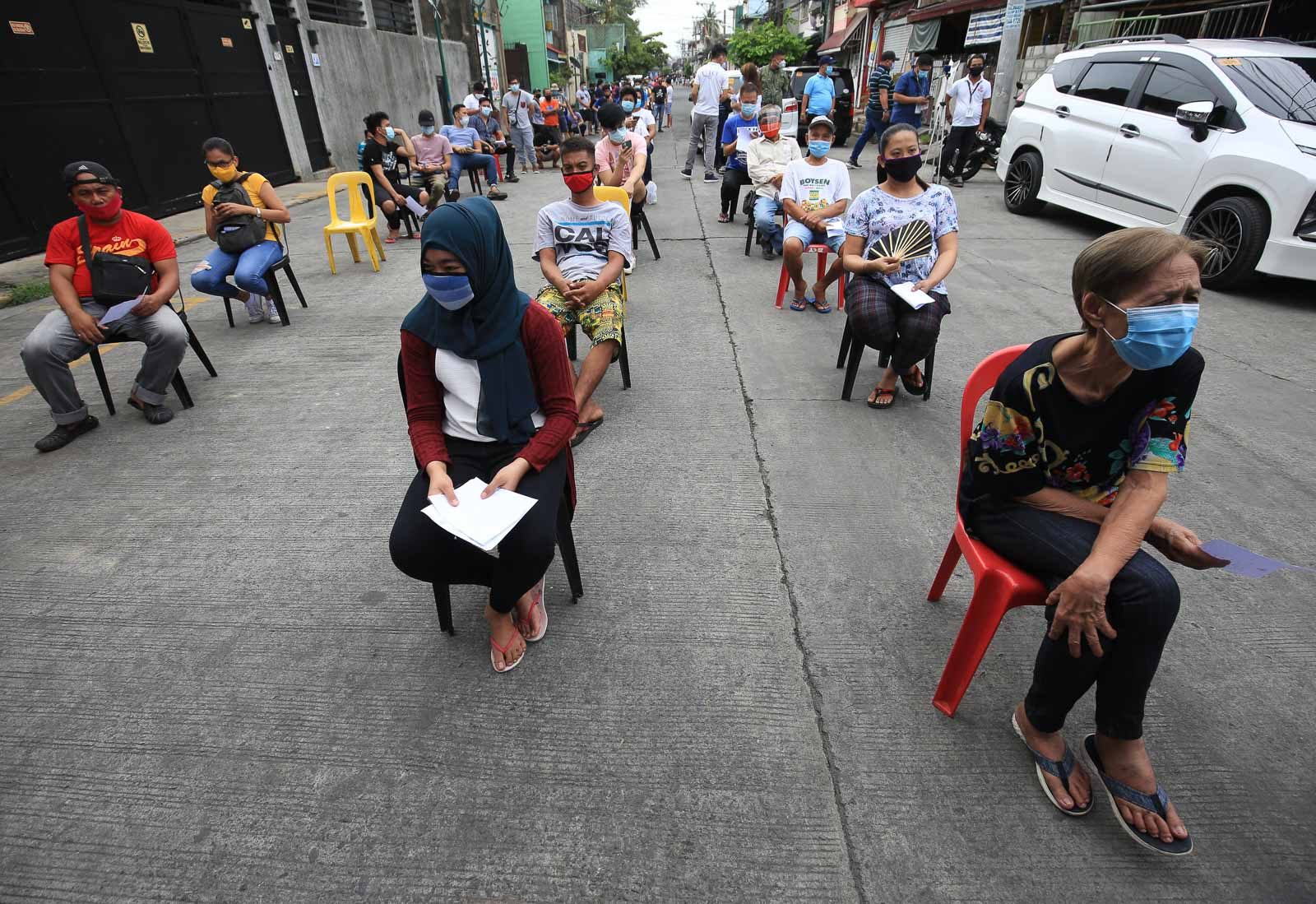SUMMARY
This is AI generated summarization, which may have errors. For context, always refer to the full article.

Philippine testing czar Vince Dizon said it may be possible to test all 14 million residents of Metro Manila with the government’s new strategy of “pooled testing.”
He said this after President Rodrigo Duterte asked coronavirus task force officials on Monday, July 20, if every person in the country can be tested to get a more accurate picture of the COVID-19 spread.
“Kakayanin po kung gagamitin natin ang pooled testing,” Dizon told Presidential Spokesman Harry Roque in an interview aired on Thursday, July 23.
Roque had asked him if it would be possible for all Metro Manila residents to undergo the “gold standard” in coronavirus testing, reverse-transcription polymerase chain reaction (RT-PCR) tests.
The Duterte spokesman had initially asked him if this could be done to all Filipinos, taking off from the President’s own wish, but Dizon had said this wasn’t feasible.
“Hindi naman po lahat ‘no. Siyempre kailangang iriserba natin po iyong mga test para sa mga area kung saan talaga nangangailangan, lalo na iyong mga area na matataas ang incidence ng COVID-19,” said Dizon.
(Not all. Of course, we need to reserve these tests for areas where they are really needed, especially areas where the incidence of COVID-19 is going up.)
“But in Metro Manila, like now when our cases are increasing, we should really expand testing in areas like Metro Manila,” Dizon added in Filipino.
What is pooled testing?
Pooled testing is one way to economize the pricey RT-PCR test kits.
Dizon explained it this way: “We can put together the samples of 10 or even 20 persons. If the result comes out negative, all of them are negative.”
If the test produces a positive result, the samples will be repeatedly tested in smaller and smaller batches until the laboratory identifies the samples that tested positive.
Roque welcomed this information, saying it fulfills Duterte’s wish for “all citizens” to get tested.
“Ibig sabihin, magkakaroon ng katuparan iyong gusto ni Presidente na lahat ng Pilipino ay ma-test, at least sa simula dito sa Metro Manila,” said the spokesman.
(Meaning, what the President wants, for all Filipinos to be tested, will be fulfilled, at least, starting with Metro Manila.)
What does DOH say?
The Department of Health, in a press briefing later on Thursday, expressed openness to the idea of pooled testing.
“DOH is open to the recommendation of doing pooled testing. The concept was approved by the DOH Execom (Executive Committee) and the suggestion was noted by the IATF,” said DOH spokesperson Maria Rosario Vergeire.
She said the department is waiting for the results of pilot study by the Philippine Society of Pathologists that would serve as a “proof of concept” for pooled testing.
How does this affect the government’s testing targets?
The coronavirus task force previously targeted testing 10 million people by February or April 2021, with most of these tests to be conducted in COVID-19 hotspots.
As of Thursday, the Philippines has tested 1.15 million individuals. At present, it can conduct an average of around 20,000 tests per day. – Rappler.com
Add a comment
How does this make you feel?
There are no comments yet. Add your comment to start the conversation.